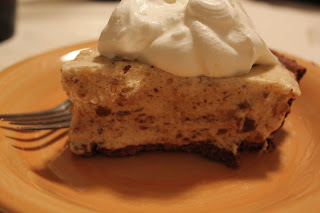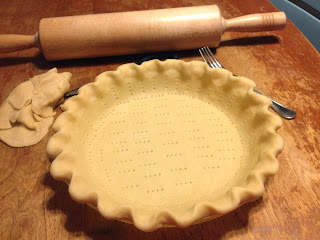Season's Greetings friends! This painting of Munjoy Hill in Portland, Maine, was done by our friend Bob Cohen. Bob is an extremely talented artist who has a studio in Portland, Maine. Wishing each of you a happy, healthy and prosperous new year. May the world find peace in 2016!
Monday, December 28, 2015
Friday, December 11, 2015
STEM Fun . . .
For elementary education!
Hi friends, I'm going out on a limb here and I'm doing something that I've never done before, I'm posting a project that I'm trying to get funded through donorschoose.org for my students. I would appreciate it if you could spread the word on your blog! Below is a link to my post. Please take a moment and read our story.
Thank you and Merry Christmas!
Mary
STEM Fun for Elementary Education!
PS. Any donation, in any amount is humbly appreciated.
Thursday, November 19, 2015
Thanksgiving Pie Round Up
Do you have a favorite Thanksgiving Day pie? I'd love to know what it is!
 |
| Coffee Chiffon |
 |
| Wild Maine Blueberry |
 |
| Lemon Meringue |
 |
| Strawberry Rhubarb |
 |
| Kentucky Derby Pie |
 |
| Grasshopper Pie |
 |
| Pie Shell |
 |
| Cranberry Nut Pie |
Sunday, November 15, 2015
Tuesday, August 11, 2015
"True love can be like salt and pepper . . ."
. . . a little sprinkle goes a long way. - D. Smith"
In my very humble opinion; Good fresh ground pepper, is the zest of your meal! There is nothing like fresh ground pepper on top of a thoughtfully prepared meal. Since my last post was on salt, I thought a natural followup should be on pepper! I gathered some information about this delicious seed.
Ground white pepper is often used in cream sauces, Chinese and Thai cuisine, and dishes like salad, light-coloured sauces and mashed potatoes, where black pepper would visibly stand out. White pepper has a slightly different flavour from black pepper, due to the lack of certain compounds present in the outer fruit layer of the drupe, but not found in the seed. A slightly sweet version of white pepper from India is sometimes called safed golmirch (Hindi), shada golmorich (Bengali), or safed golmirch (Punjabi).
Green pepper, like black, is made from the unripe drupes. Dried green peppercorns are treated in a way that retains the green colour, such as treatment with sulphur dioxide, canning or freeze-drying. Pickled peppercorns, also green, are unripe drupes preserved in brine or vinegar. Fresh, unpreserved green pepper drupes, largely unknown in the West, are used in some Asian cuisines, particularly Thai cuisine.[8] Their flavour has been described as spicy and fresh, with a bright aroma.[9] They decay quickly if not dried or preserved.
Wild pepper grows in the Western Ghats region of India. Into the 19th century, the forests contained expansive wild pepper vines, as recorded by the Scottish physician Francis Buchanan (also a botanist and geographer) in his book A journey from Madras through the countries of Mysore, Canara and Malabar (Volume III). However, deforestation resulted in wild pepper growing in more limited forest patches from Goa to Kerala, with the wild source gradually decreasing as the quality and yield of the cultivated variety improved. No successful grafting of commercial pepper on wild pepper has been achieved to date.
Orange pepper or red pepper usually consists of ripe red pepper drupes preserved in brine and vinegar. Ripe red peppercorns can also be dried using the same colour-preserving techniques used to produce green pepper.
Pink pepper (I want to try this one) from Piper nigrum is distinct from the more-common dried "pink peppercorns", which are actually the fruits of a plant from a different family, the Peruvian pepper tree, Schinus molle, or its relative the Brazilian pepper tree, Schinus terebinthifolius. A pink peppercorn (French: baie rose, "pink berry") is a dried berry of the shrub Schinus molle, commonly known as the Peruvian peppertree. As they are members of the cashew family, they may cause allergic reactions including anaphylaxis for persons with a tree nut allergy.
Do you like pepper? I keep a pepper-mill on my table, how about you?
Two Years Ago
(click on the title below)
Wednesday, July 15, 2015
"Worth Your Salt . . . "
Did you know . . . the word "salary" was derived from the Latin term "salarium" which was the name for a soldier's pay in the army of ancient Rome. The pay included a large ration of salt, which was a spice of high value and also a medium for exchange; thus the origin of such expressions as "salt of the earth" and "worth your salt."
Most recipes that call for salt are referring to table salt, which has additives like iodine (to prevent thyroid disease) and an anti-caking agent to prevent lumping in humidity.
Many chefs prefer kosher salt (additive-free, coarse-grained) for cooking and sea salt for table use because they have a softer flavor than table salt.
Kosher salt is made by compacting granular salt, producing large, irregularly shaped flakes which allows the salt to easily draw blood when applied to butchered meat (koshering process). The structure dissolves easily and provides flavor without oversalting because of it's large surface area.
Hawaiian sea salts (red or black) are specialty finishing salts. The red variety has an iron taste and is used to add color. The black variety has a sulfuric aroma from the addition of purified lava. Black salt (kala namak or sanchal) is more tan than black, and has a very strong, sulfuric flavor.
Black salt is available in Indian markets, either ground or in lumps.
Pickling salt is free of the additives that turn pickles dark and pickling liquid cloudy.
Sel gris is a gray salt from France, and fleur de sel is a by-product of sel gris created when sel gris is allowed to bloom into lacy flowerlike crystals in evaporation basins.
Maldon sea salt is a British finishing salt similar to fleur de sal. It has a light delicate flavor that is obtained by boiling sea water to form delicate pyramidal crystals.
Rock salt is used to make ice cream. Salt comes either from salt mines or from the sea.
Most of today's salt is mined and comes from large deposits left by dried salt lakes throughout the world. Salt preserves foods by creating a hostile environment for certain microorganisms. Within foods, salt brine dehydrates bacterial cells, alters osmotic pressure and inhibits bacterial growth and subsequent spoilage. Read more: http://www.food.com/library/salt-359?oc=linkback
Most recipes that call for salt are referring to table salt, which has additives like iodine (to prevent thyroid disease) and an anti-caking agent to prevent lumping in humidity.
Many chefs prefer kosher salt (additive-free, coarse-grained) for cooking and sea salt for table use because they have a softer flavor than table salt.
Kosher salt is made by compacting granular salt, producing large, irregularly shaped flakes which allows the salt to easily draw blood when applied to butchered meat (koshering process). The structure dissolves easily and provides flavor without oversalting because of it's large surface area.
Hawaiian sea salts (red or black) are specialty finishing salts. The red variety has an iron taste and is used to add color. The black variety has a sulfuric aroma from the addition of purified lava. Black salt (kala namak or sanchal) is more tan than black, and has a very strong, sulfuric flavor.
Black salt is available in Indian markets, either ground or in lumps.
Pickling salt is free of the additives that turn pickles dark and pickling liquid cloudy.
Sel gris is a gray salt from France, and fleur de sel is a by-product of sel gris created when sel gris is allowed to bloom into lacy flowerlike crystals in evaporation basins.
Maldon sea salt is a British finishing salt similar to fleur de sal. It has a light delicate flavor that is obtained by boiling sea water to form delicate pyramidal crystals.
Rock salt is used to make ice cream. Salt comes either from salt mines or from the sea.
Most of today's salt is mined and comes from large deposits left by dried salt lakes throughout the world. Salt preserves foods by creating a hostile environment for certain microorganisms. Within foods, salt brine dehydrates bacterial cells, alters osmotic pressure and inhibits bacterial growth and subsequent spoilage. Read more: http://www.food.com/library/salt-359?oc=linkback
Tuesday, June 9, 2015
Wednesday, April 15, 2015
Spring in Maine - YESSSSSS
Spring has finally arrived in Maine!
| This stunning photo was taken Easter Eve by Maine Magazine - Elizabeth Quaglieri |
Sunday, February 22, 2015
I Surrender to Winter 2015
Yes, we've had some snow - over 111 inches of it! I have NEVER seen so much snow in my life! I surrender to New England winter of 2015!
View from my Massachusetts bedroom window! Pretty isn't it? I'm sick of looking at it!
Can you figure out where the stairs to the bandstand are?
AMassachusetts neighbors home! Look at that ice!
Snow at our cottage
Ice on the rocks
Subscribe to:
Posts (Atom)















